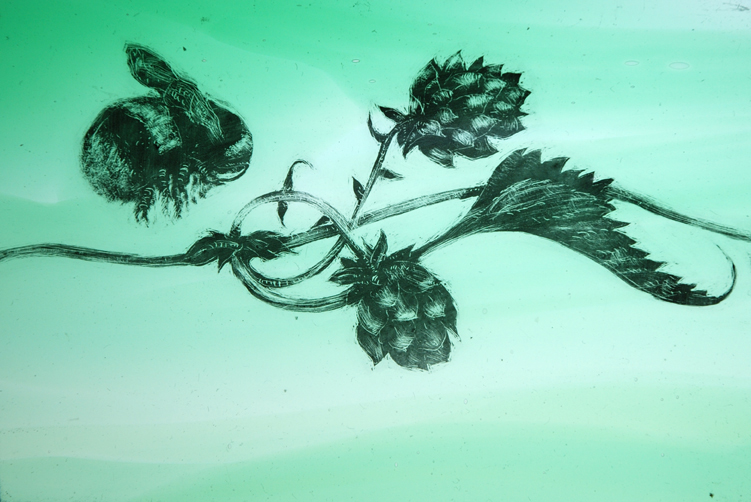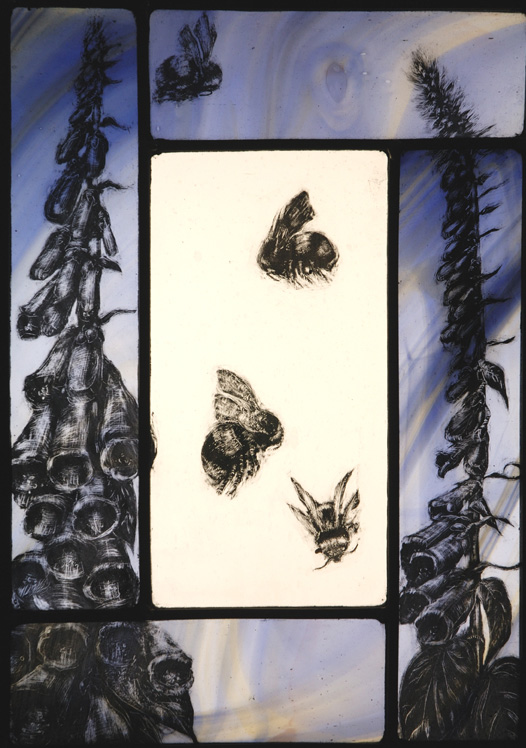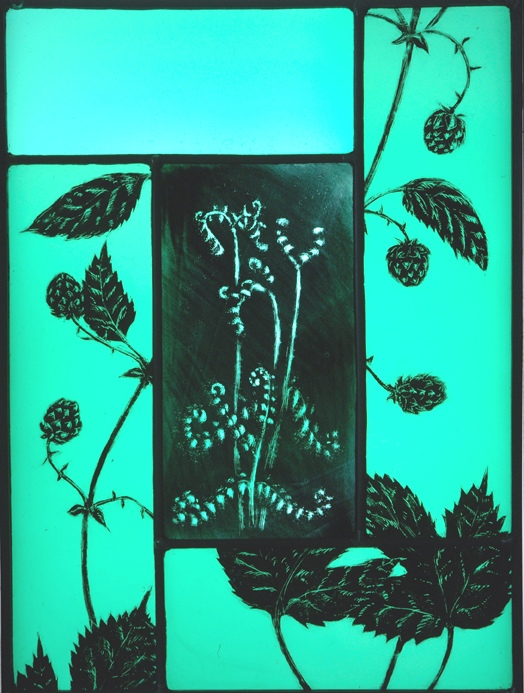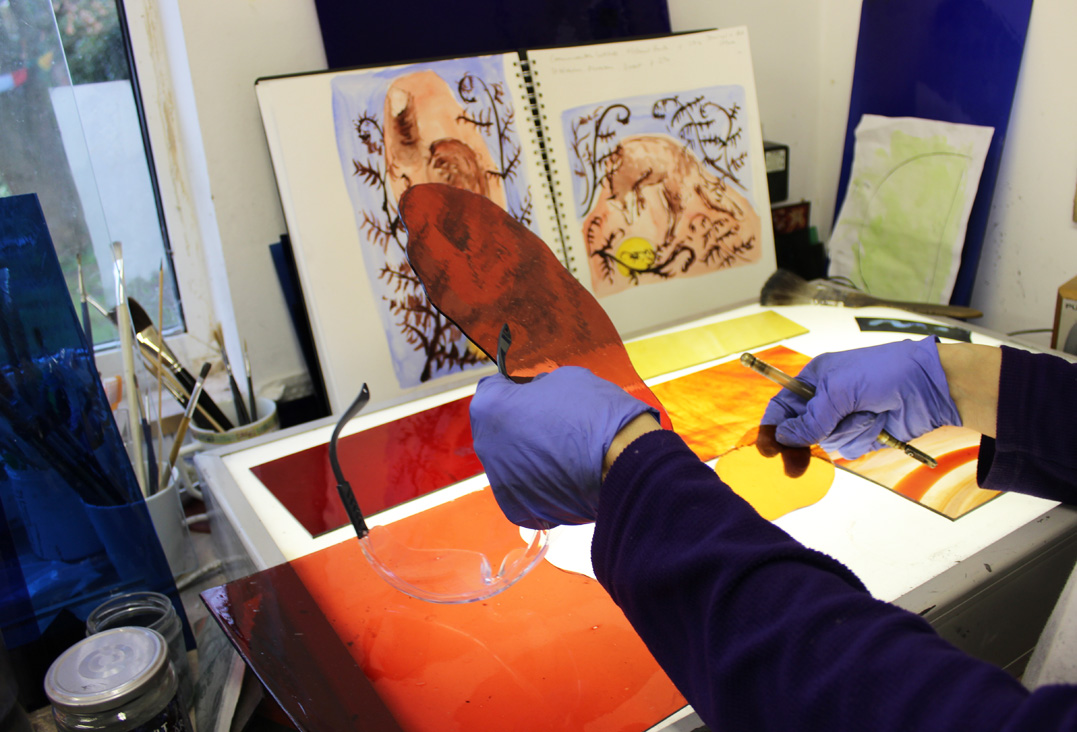Rowan McOnegal and the art of glass
Artist Rowan McOnegal produces exquisite glass wallhangings, as well as stained glass for doors and windows

Herefordshire-based Rowan McOnegal makes beautiful images by sandblasting glass or fusing glass in a kiln. Much of the imagery for her stained glass panels is inspired by nature, with bees being creatures she's particularly fond of..
Think of stained-glass, and no doubt images of church windows pop into your mind, with their depictions of saints and angels. Or at the non-ecclesiastical end of the spectrum, you might think of pretty little touristy nick-nacks depicting suns or stars or flowers.
Fine artist and photographer Rowan McOnegal is neither godly nor twee, but she does love the natural world and her stained glass and sandblasted glass panels are works of art that are beguiling and calming.
Mount them on the wall with a light behind them and they are utterly transfixing - it's no wonder institutions such as hospices and hospitals are among her clientele, since McOnegal's art is intriguing and uplifting.
She trained in fine art and says she eschewed canvas for glass because it combines her two passions, light and nature. 'It’s all about light, isn’t it? I came to glass from that. And I take my inspiration from everything around me.'
McOnegal has considered the environmental pros and cons of working with glass. So while glass is made from silica - sand - which is abundant, a lot of energy is consumed to make it.
And stained glass has other issues. Glass paint is made from ground mineral oxides, which, when fired in a kiln bond with the glass to become part of it, while the separate sections of a work in glass are welded together with lead, which is toxic and must not be ingested.
But McOnegal feels the longevity argument wins the day. 'Just look at beautiful church windows around the world, many hundreds of years old and still looking as good as new. I feel that glass is truly sustainable in that as long as you don’t actually break the glass, it can last forever.'
She says the glass she uses most is blown in the West Midlands using Swedish sand, while she does also buy glass from Poland and France.
The artist, who works to commission, says her own equipment in her Ledbury studio is limited to an energy-efficient kiln, and to a sandblaster,'which is a small, noisy box.'
For those who aren't quite clear about sandblasting, sand is forced through a high-pressure hose to etch a design into the coloured glass. The deeper you go into the colour, the lighter the glass, allowing the artist great flexibility in terms of shading. McOnegal says it’s 'rather like printing black and white photographs, it can be touch and go how far you go with it'.
There are other ways of working with glass that she just cannot justify, particularly acid etching. 'I don’t like the toxic side of things. Having worked with chemicals in photography, I want to keep away from that.’





